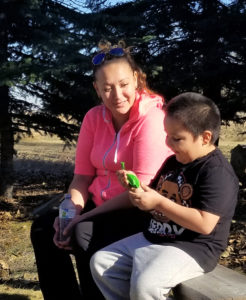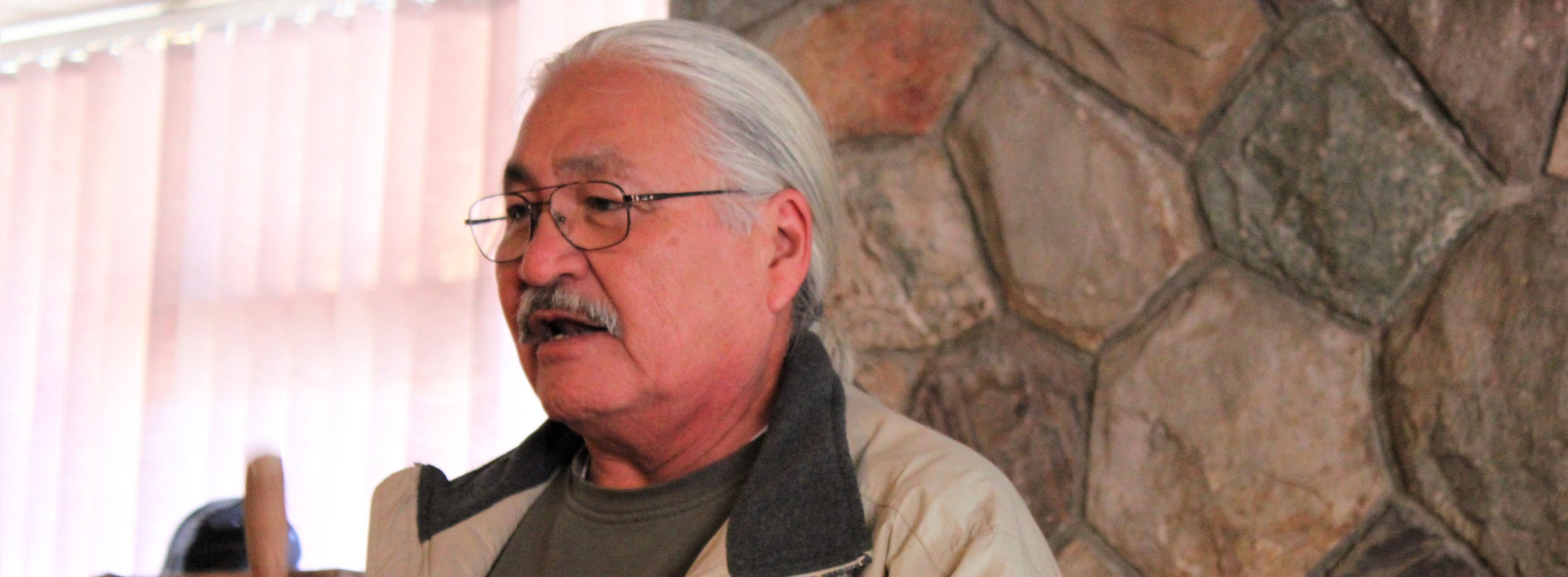Braiding the Sweetgrass: creating resilience through culture, community and reconnection
Sweetgrass is a sacred plant that plays an important role in many Indigenous cultures and is often used in a healing manner as medicine or smudge. It’s fitting that it is named in Hull’s Braiding the Sweetgrass program that guides Indigenous. families on their healing journey through the effects of Intergenerational Trauma (IGT).
The name holds particular meaning as it was gifted to Hull by a team of eight Elders who have guided and informed the program from the beginning. Being named in a traditional way is a great honor. The name refers to the braiding of traditional and western ways being used on the healing journey. To be clear, it is not a blending of those ways, which could result in important aspects being lost. Rather, it is cultural inclusion — finding points of intersection and ways for both to exist respectfully alongside each other, understanding that both hold value and, together, they create strength.
Braiding the Sweetgrass brings together culture, community and a reconnection to history and identity to create resilience within and among participating families. Much like braiding blades of grass together creates strength, weaving together those three pillars does the same.

Braiding the Sweetgrass differs from other programs offered through Hull Services. While Hull’s programs typically build from the foundation of understanding brain development and seeing culture as a means to support healthy brain development, Braiding the Sweetgrass flips the model upside down, putting cultural teachings, identity and tradition at the base of it and building from there.
“It’s not just the ‘what’ but the ‘how’ we do these things that matter,” says Valerie Sipos, Program Coordinator, Braiding the Sweetgrass. “Ceremony plays a big role.”
“We always put the first emphasis on culture,” adds Kathleen Hagan, Program Director. “Whether talking about brain development or traditional roles, every part of this program has ceremony attached to it. It’s very significant.”
“The cultural teachings tie back to the research on brain development. Our brains were built to live in large communities that support each other. Relational interconnections make us strong as people.”
The larger community of Calgary is rich in its vast array of programs that serve children, youth and parents. Braiding the Sweetgrass believes it is important to serve whole families together, recognizing they have all been part of the trauma that has transferred from generation to generation. Working with the whole family is key to healing from the cycle of IGT.
Sipos points out that Elders and Indigenous practitioners with diversity in their cultural backgrounds deliver the program, noting that “because of the nature of what we are trying to disrupt, it’s important the people facilitating have the same lived experience.” The elders and practitioners were recruited by Casey Eagle Speaker, Hull Services’ Indigenous Resourses Coordinator. Along with providing support, training, resources and spiritual experiences to everyone interested in learning the history and cultural traditions of Indigenous people, Casey, along with the Elders, plays a vital role in delivering the program.
It’s also important that participants have control over their journey and participate to the degree that they are ready.
“It would be history repeating itself for us to tell people this is what you need to heal,” says Hagan. ”Rather we introduce people to key pillars of intervention to interrupt the cycle of trauma — cultural teachings, safe space and a community of like-minded people. Everyone’s journey and experience is unique.”
Hull Services is humbled, as a non-Indigenous agency, to be delivering this program and to be walking alongside participants as they find their way to a place of well-being.
“Braiding the Sweetgrass is about empowering people to live a good life,” says Sipos. “In four short months, you see this amazing transformation for many families. They walk away with what they need to go on to the next step of healing.”
For some families, participating in Braiding the Sweetgrass stirs their curiosity and motivates them to take further steps to reconnect to their culture. Hull has developed a Continuing Community component for those wanting to continue that journey, providing ongoing opportunities for past participants to access cultural teachings and the larger Braiding the Sweetgrass community, as well as supporting their connection to the broader Indigenous community in Calgary.
Sharing the Basket
In Indigenous cultures, knowledge isn’t something you possess, it’s meant to be given away.
When Ranchlands School contacted Braiding the Sweetgrass looking for ideas on how to engage and build community within their Indigenous families, Hull did them one better and offered to run the program at their school.
The elementary school fully embraced the opportunity. Even their principal, Cheri Wickland, participated (with the families’ permission) to gain greater understanding of how to better support their Indigenous community.
“The changes I saw in the participating families and their relationships with each other, their culture and our school was remarkable. It was something I hadn’t seen before,” says Wickland. “I’ve changed from having had the experience and I know our kids and their
families have too.”
In the spirit of the program, Ranchlands School is now creating its own practices and activities to continue to share and strengthen connections created through Braiding the Sweetgrass.
That’s not unique to program participants, according to Hull Service’s Program Director, Kathleen Hagan. “Connection is something we are all seeking. It’s fundamental to everyone’s sense of well-being that we have a community and a place to belong.”
Developing the Braiding the Sweetgrass program is a journey with many learnings. Seeing the success of the program at Ranchlands School validates what the Elders are telling us — that it is now ready to be passed to other organizations as well.
Hull is excited to begin sharing this basket of knowledge with our larger community to help guide other Indigenous families to a place of well-being.
Connection plays an important role in Hull’s Braiding the Sweetgrass program, whether connecting participants to
their culture, identity, history or the broader Indigenous community in Calgary.
All Indigenous families wanting to make these connectionscand participate in Braiding the Sweetgrass are invited to learn more about the program by contacting the Program Coordinator, Valerie Sipos, at 403.207.2533.
